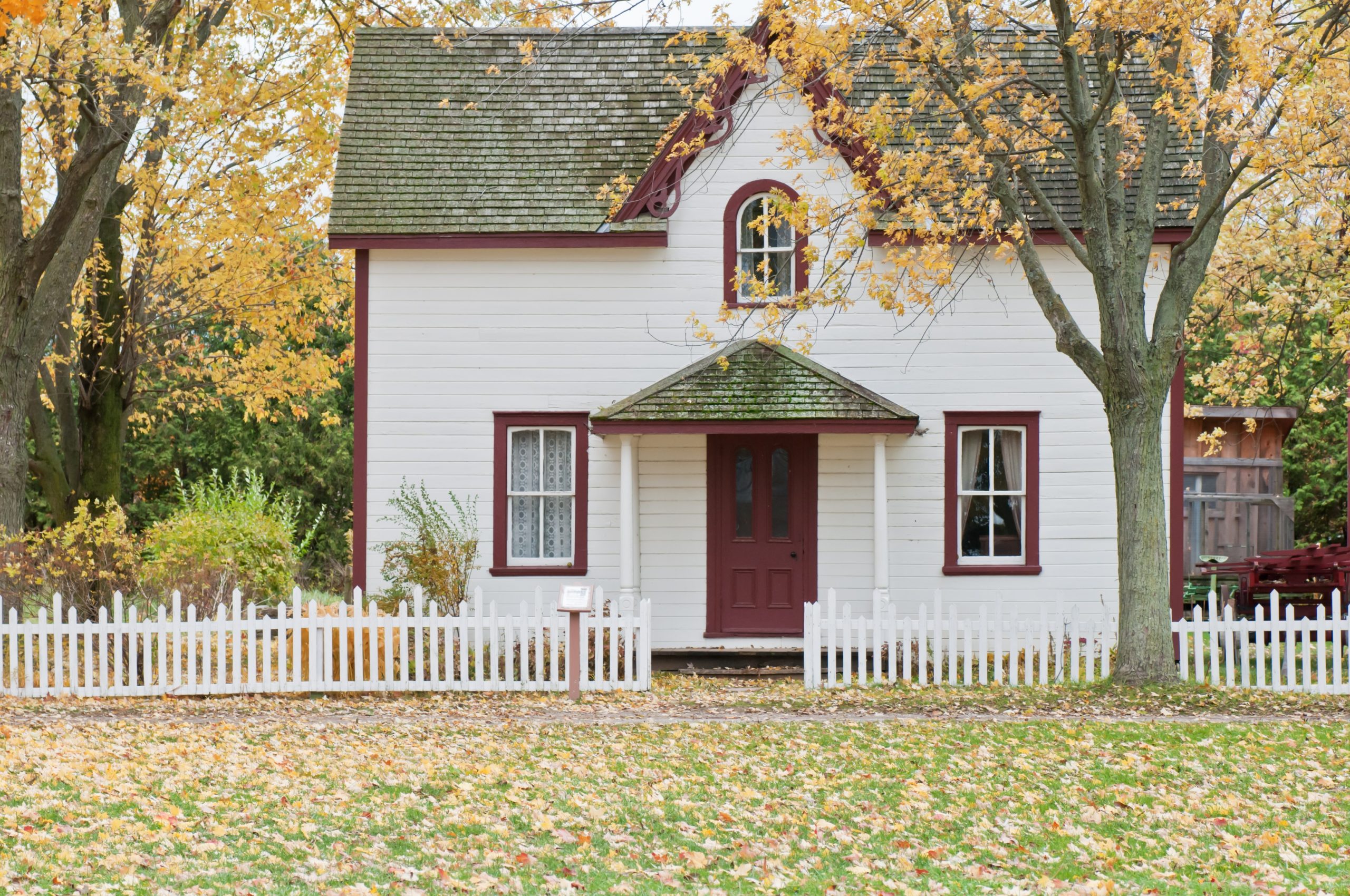Many seasoned and amateur investors alike are searching for investing safe havens with priced-in rate hikes on the horizon and inflation at a forty-year high. One potential approach to hedge against inflation is investing in real estate, since it isn’t particularly correlated to stocks and bonds. If you’re thinking about investing in real estate for the first time, one of the first things you’ll want to learn is how to calculate ROI on rental property.
Whether you want to invest in real estate as a part of your retirement plan, to create a source of nearly-passive income, or as a hedge against inflation, you likely are looking to increase your wealth in one way or another.
While there are a number of important metrics you will want to use to analyze potential properties and those already in your portfolio, measuring return on investment (ROI) is an essential tool to understand the profitability of a property.
Choosing the right property is about more than getting a dirt-cheap deal or buying in an ultra-hot rental market. It’s essential that all of the numbers add up in your favor. Let’s take a look at how to calculate ROI on rental property to ensure that you select a property that works best for your financial goals.

Return on investment (ROI) is a metric you can use to determine how much profit an investment will produce in relation to how much the investment cost. It is displayed as a percentage and can help you understand the investment efficiency and efficacy of your dollars.
Whether you’re considering renting out the in-law apartment on your property or you’re thinking about buying a 30-unit apartment building, ROI is an important tool to help you understand whether or not an investment is worth the risk.
The ROI formula is quite simple as well as versatile. You can apply it to any type of investment, whether it be rental properties, stocks, bonds, or another investment entirely.
There are some challenges to consider when you are calculating ROI for a rental property, however. This is because there are a number of variables that you can choose to either include or exclude, leaving the percentage easy to manipulate. In the next sections, we’ll take a look at the ROI formula as well as the different factors that can impact the result you get from these calculations.
In order to calculate the return on investment for any type of investment, you’ll need to take the net gain, or net profit, and divide it by the amount you originally invested.
To find your net gain, you subtract the cost of investment from the gain on investment. The complete ROI formula looks like this:
ROI = (Gain on Investment - Cost of Investment)/Cost of Investment
As an example, let’s say that you made a $2,000 investment five years ago and you sell it today for $3,000. To calculate the ROI, you would subtract 2,000 from 3,000 to find your net profit, which is $1,000. You would then divide this net profit by the initial investment cost, which was $2,000. This leaves you with an ROI of 50% (1,000/2,000=0.50).

As you can see, the ROI formula is fairly simple when you are looking at a straightforward cash investment. However, there are a lot of moving parts when it comes to a rental property, meaning that there are a number of variables to consider when calculating ROI.
To find the total cost of investment in a rental property, you will need to collect or estimate all of the expenses related to the property. These might include:
The more detailed you can be in your understanding of the cost of investment, the more precise your ROI calculation can be.
Once you have outlined the costs of investment for a rental property, it’s time to look at the total profit or gains you’ve made (or project you will make) from an investment. Some common ways that rental properties turn a profit include:
In the ROI formula listed above, you can see that calculating ROI can be a fairly simple process. However, things can get a bit more complicated when you’re talking about rental or investment properties. This is because there is a long list of variables that you can take into account, leaving you with a range of ROIs depending on what lens you view the investment through.
Some such variables include your financing terms, the methods of figuring leverage, and maintenance and repair expenses.
For some real estate investors, the choice between buying a property in cash and financing it isn’t really a choice. If you don’t have access to a big chunk of cash to buy a property outright, you are likely shopping around for a loan. However, some investors that have the ability do choose to purchase rental properties in all-cash transactions.
It’s typically a lot simpler to calculate the ROI for cash purchases than for financed purchases. Let’s take a look at what you need to know about determining your return for both methods of purchasing a property.
When you are determining the ROI for a property you financed, the calculations are a bit more complicated than if you bought the property in cash. Let’s use an example to help you understand how to calculate ROI for a financed transaction:
You also need to factor in the associated, ongoing costs of having a home loan. For the $160,000 you took out for a loan, let’s say the mortgage is a 30-year loan with a fixed interest rate of 3%. This means that your monthly payments for principal and interest would be $637.57.
After one year, you have:
With this information, you can calculate the ROI of your financed rental property by following these steps:
If you buy a property with cash, you’ll find that it’s pretty straightforward to calculate the ROI. Let’s take a look at an example to help you understand how to determine ROI for a cash purchase.
After a year of operating your rental property, you have:
Once you have this information, you can calculate the ROI of the property. To do so, you need to:
There is no one-size-fits-all answer to this question. That being said, a good ROI for a rental is generally thought to be above 10%. However, an ROI of between 5% and 10% could also be completely acceptable depending on your personal financial goals and plan.
Different investors choose to take on different amounts of risk when it comes to rental property investments. You might find, for example, that a property that produces a predictable ROI of 7% fits within your comfort zone when it comes to risk much better than a property that could potentially offer an 18% ROI but with less certainty.
It’s also important to look at all of the associated costs when you are considering buying a rental property. The expenses listed in the above examples are just a sampling of the types of costs that can come along with owning a rental property. The more detailed you are in understanding how much it will cost you to operate a rental property, the better chance you will have of estimating an accurate ROI.

In real estate, there is a simple formula that you can use to get a sense of whether or not a property will produce enough rental income in order to be considered a good investment. While you certainly shouldn’t use this rule to make final purchasing decisions, it can be useful for quickly analyzing a long list of properties.
Basically, this rule states that the monthly rent should be 2% or more of the property’s total cost. The thinking here is that with this percentage of the property’s cost coming back to you in rental income, you should be able to expect positive cash flow.
In order to calculate this for a property, you simply have to add the purchase price with any anticipated repair costs. Let’s say, for example, that you are looking at a property with a purchase price of $100,000 and you anticipate that it will take $20,000 in repairs to get it ready as a rental. Based on this rule, you will need to be able to generate $2,400 in monthly rental income in order to generate positive cash flow.
A property doesn’t necessarily have to fit within this rule in order to be a good rental property. However, it can be worthwhile to understand how your monthly rental income relates to your investment in the property when you are selecting the ideal property for your portfolio.
It’s worth noting that the 2% rule is typically applied in places where real estate values are lower, such as in the mid-west or the southern US. In places where real estate values are sky-high, such as New York, LA, or San Francisco, investors might utilize the 1% rule instead.

Another thing that complicates the process of determining your rental property ROI is deciding whether or not you count home equity into the occasion. Some investors prefer to include their equity, which is the dollar amount that results from taking the property’s market value and subtracting the outstanding loan amount from it. The reason that not all investors incorporate equity into their calculations is that equity isn’t accessible unless you sell the property.
Basically, as you make monthly mortgage payments, you will slowly start to build up equity over time. The way that amortized loans work is that at the beginning of the loan, more of your payments are going towards interest than the principal. Each month, you pay off slightly more principal until you reach the point where you are primarily paying down the principal. Some investors might choose to overpay their mortgage in order to reduce the amount of interest they pay overtime, while others might be happy to pay interest and invest their money elsewhere where they expect a greater return.
If you want to include equity in your ROI calculations, you will want to add up how much money you have paid towards the principal of a property. It’s important that you don’t include the money you’ve paid towards interest, as these payments aren’t included in your equity but are instead payments you make to the lender as a cost of the loan.
Once you have added up how much of the principal you have paid down, you can add that to your other annual profits. You can then use that as a part of your ROI calculation to get a more holistic view of your property’s ROI.
You can also do this with a prospective property by anticipating how much principal you will have paid down by the end of each year. However, it can be simpler and much more straightforward to calculate ROI for potential properties without considering equity buildup over time.
When you’re taking your hard-earned money and investing it in a rental property, you want to be as informed as possible to ensure that your making the right investment decision for you. When you have a sense of the ROI of a property, it allows you to be much more informed as an investor.
The process of determining ROI for a rental property means that you will need to sit down and estimate your rental income and your expenses. During this process, you can look at other properties that are contenders as rentals and compare them to find the ideal property for your portfolio.
It’s important to understand that you are always taking on risk when you invest your money in real estate, or anywhere, for that matter. Some properties might have additional expenses than those listed in the above examples, such as HOA fees, renovation costs, and more. You will need to factor these into the ROI of a potential property in order to get an accurate sense of the profitability of a property.
Another thing worth noting is that the above examples assumed that your property is rented out for the entire year. It’s a good idea to factor the potential for vacancies into your property purchasing decision. If you don’t leave wiggle room to cover potential vacancies, you could find yourself covering all of the property costs on your own.
Understanding how to calculate ROI is an important tool for any real estate investor to have in their arsenal. This simple formula can give you a picture of the profits you can anticipate from any given property. When you are comparing different potential properties, you might be surprised by which properties on your shortlist offer the most promising ROI.
That being said, ROI isn’t the only metric to take into account when you are selecting a property. Plus, there can be a lot of information to take into account and it can be hard to keep track of every little expense you’ll face.
That’s why we created RentalPropertyCalculator.com. This calculator allows you to input every relevant piece of information to make sure that you get the most complete picture of a property’s potential. Not only will the calculator determine your ROI, but it will also tell you everything you need to know: your net operating income, your cash flow, your IRR per year, and so much more.
We encourage you to share this article on Twitter and Facebook. Just click those two links - you'll see why.
It's important to share the news to spread the truth. Most people won't.